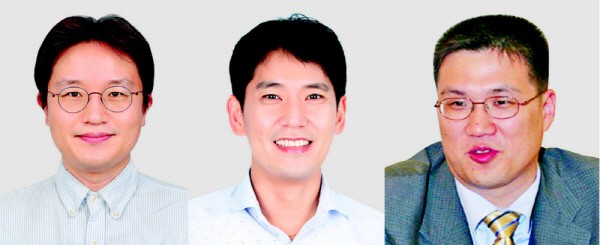Samsung Electronics has solved the world's first low-power implementation of ‘Magnetoresistive Random Access Memory (MRAM)'. Non-volatile MRAM, which stores data without getting power supply, provides high stability and speed, and is attracting attention as a next-generation memory semiconductor. It is evaluated that it has expanded the base of next-generation memory semiconductors by implementing artificial intelligence (AI) with in-memory computing, which was virtually impossible to apply with existing MRAM technology.

Samsung Electronics announced on the 13th that they have demonstrated the world's first in-memory computing based on MRAM. In-memory computing is a cutting-edge chip technology that not only stores data but also performs calculations in memory. Parallel operation is possible without moving large amounts of data in memory. This minimizes power consumption. It is considered as a powerful technology to make next-generation low-power AI chips. Existing computers consist of a memory chip in charge of data storage and a processor chip in charge of calculations.
For the implementation of in-memory computing, research on non-volatile memory such as △resistive memory (RRAM) △phase-change memory (PRAM) △MRAM, which stores information even when power supply is cut off, has been continued. In particular, MRAM has emerged as a next-generation memory due to its excellent data stability and high speed. However, there was a limitation that the power advantage was not great when trying to apply in-memory computing. This is because of the low resistance value characteristic of MRAM.
Researchers at Samsung Electronics have devised a method to change the structure of the ‘current summation' method, which was the reason of the limitation of MRAM, to the structure of the 'resistance summation'. By overcoming the limitations of MRAM, it succeeded in designing a low-power design suitable for in-memory computing. The research team also applied the performance of an in-memory computer chip of MRAM to AI computation. It has been verified that numerical classification through AI operates with up to 98% accuracy and 93% accuracy for face detection.
This research is appraised to have laid the foundation for mass-producing next-generation non-volatile memory combined with system semiconductor process technology and realizing the next-generation low-power AI chip. It is also meaningful that the MRAM utilization area has been expanded. Researchers at Samsung Electronics also proposed the possibility of using MRAM as a neuromorphic platform for downloading biological neural networks.
The research result was published on the 12th (UK local time) in the world-renowned academic journal 'Nature'. Seung-chul Jung, a researcher at Samsung Advanced Institute of Technology, was the first author, and Don-hee Ham, a fellow at the Advanced Institute of Technology, and a professor at Harvard University, and Sang-joon Kim, a master at the Advanced Institute of Technology participated as co-corresponding authors. Researchers from Samsung Advanced Institute of Technology, Semiconductor Research Center, and Foundry Division also participated as the joint research. Researcher Jung said, “In-memory computing is a technology that combines memory and computation, and has similarities to the human brain, where memory and computation are mixed. This research will be helpful in the future study and development of neuromorphic technology that mimics the real brain.”
By Staff Reporter Dong-jun Kwon (djkwon@etnews.com)